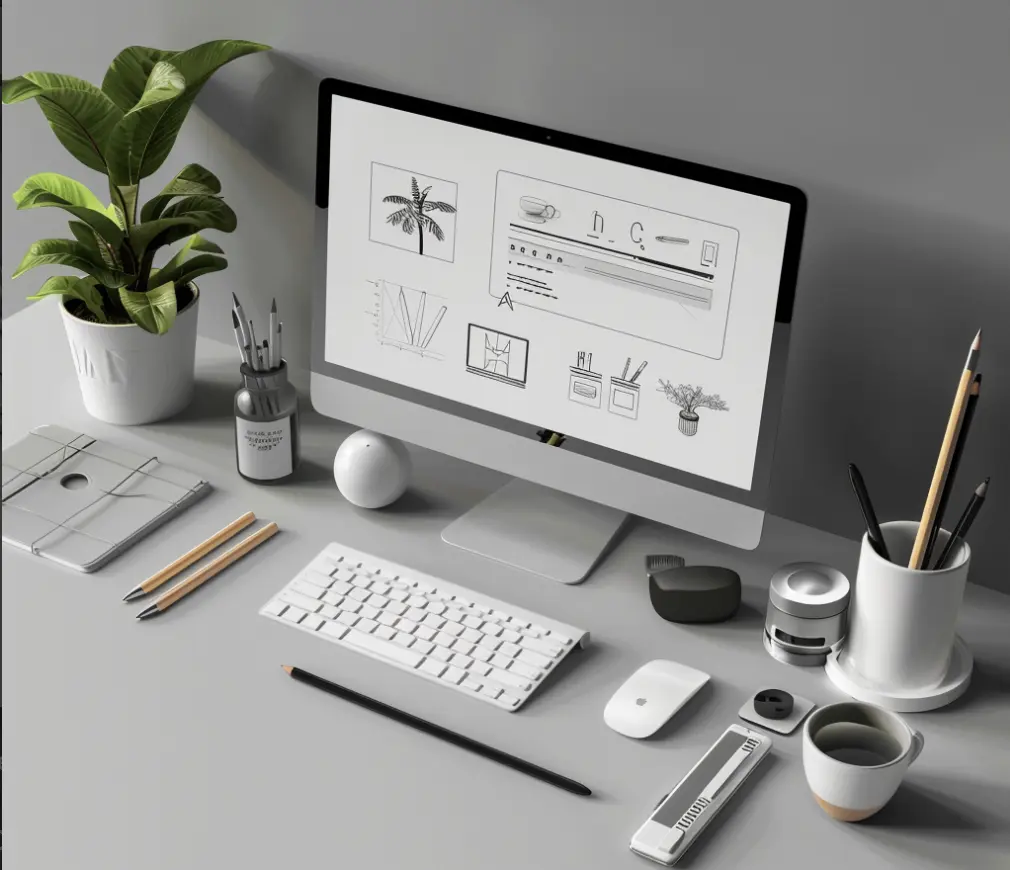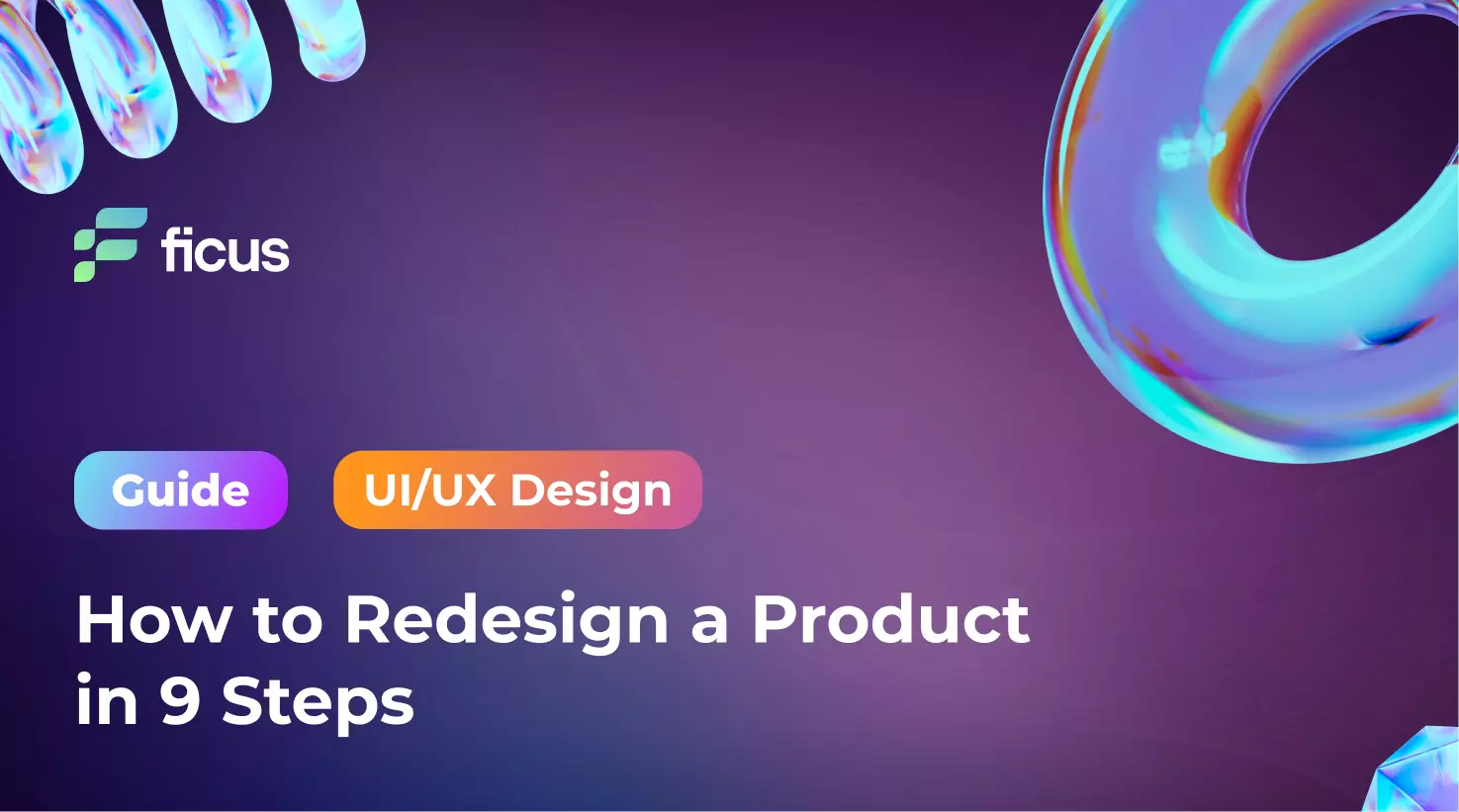Product redesign is not just about updating looks; it’s about keeping your product competitive, ensuring it delivers maximum value and meets evolving customer needs, technologies, and business objectives. The product redesign process equips businesses to adapt to these changes efficiently. This article looks at effective ideas and examples of product redesign, illustrating how to cost-effectively change product design, closely aligning it with user expectations, and testing these changes before full-scale implementation. This ensures your redesign product efforts are well-informed, targeted, and poised for success.
- Product redesign extends beyond aesthetics to align with user needs
- The systematic approach enhances usability, satisfaction, and market position.
- Iterative design and user testing ensure alignment with strategic goals.
What is a product redesign?
Product redesign is updating and enhancing an existing digital asset, such as an app or website, to stay ahead in competitive markets. This redesign product initiative is driven by the need to adapt to evolving technologies, user demands, and trends. The product redesign process involves evaluating the current offering, engaging in user research, and brainstorming product redesign ideas to enhance functionality aesthetics or introduce new features. Successful product redesign examples demonstrate significant improvements in user experience and market position. By iterating on design concepts and testing with users, the redesigned product journey ensures that the updated product aligns with user needs and business goals, making it a critical strategy for growth and adaptation.

What are the main reasons for redesigning a product?
Embarking on a product redesign can stem from multiple catalysts, each compelling in its own right. From revitalizing outdated aesthetics to improving functionality, let’s dive into the critical reasons that guide businesses through the product redesign process, uncovering the strategic importance behind each decision.
- Outdated look and feel
Revamping an outdated look and feel is a compelling reason to initiate a product redesign. This transformation ensures the product’s aesthetics and user experience align with contemporary expectations, maintaining its appeal. An old-fashioned appearance can deter new users, suggesting the product might lack innovation. Through the product redesign process, integrating novel product redesign ideas breathes new life into the product, enhancing its attractiveness to both loyal and prospective users. Showcasing updated product redesign examples demonstrates a commitment to progress, reinforcing the product’s relevance in an ever-evolving market.
- Low conversion and retention rates
Facing low conversion and retention rates signals a critical moment for a product redesign. This trend indicates that the product no longer resonates with or meets the needs of both potential and current users. Initiating a redesign product effort is essential to address these issues head-on. Through the product redesign process, identifying and implementing product redesign ideas that better align with user expectations can dramatically improve these metrics. Successful product redesign examples demonstrate how thoughtful changes can reinvigorate a product’s appeal, significantly boosting user engagement and loyalty and, ultimately, the product’s market performance.
- Negative customer feedback on current design and usability
Negative customer feedback on current design and usability is a direct prompt for a product redesign. This feedback highlights specific areas where the product fails to meet user expectations, signaling an urgent need for improvement. Engaging in the product redesign process allows teams to address these concerns directly, leveraging product redesign ideas to enhance user satisfaction. By analyzing and acting on such feedback, redesigning product efforts can significantly improve how a product functions and feels. Successful product redesign examples often stem from taking this constructive criticism to heart, demonstrating a brand’s commitment to evolving alongside its users’ needs.
- Expanding into new markets
Expanding into new markets necessitates a strategic product redesign. Original product designs may not account for diverse expectations and requirements from different global audiences. A comprehensive redesign product initiative is often required to internationalize and localize effectively. This aspect of the product redesign process involves tailoring the product’s design to meet new markets’ cultural, linguistic, and usability standards. Incorporating product redesign ideas that resonate with these new audiences can dramatically increase a product’s appeal and success internationally. Product redesign examples in this context highlight the transformative impact of adapting a product for global reach.
- New features or product upgrades
Introducing new features or product upgrades typically necessitates a comprehensive product redesign. Especially for rapidly growing SaaS start-ups and mobile applications, early development often leads to accumulated UX and technical debt. Reaching a point where further growth is hindered without significant changes, a redesign product initiative becomes essential. The product redesign process then integrates product redesign ideas that effectively facilitate these new functionalities. Product redesign examples in this context demonstrate how incorporating advanced features or upgrades can rejuvenate a product, ensuring its continued relevance and competitiveness in the market.
Design is not just what it looks like and feels like. Design is how it works.
Steve Jobs
Benefits of a product redesign
Embarking on a product redesign process can offer transformative benefits, directly impacting user engagement and business outcomes. By infusing fresh product redesign ideas, companies can elevate their offerings in several critical areas:
- Boosts Usability and Accessibility – Simplifying interfaces and improving the overall user journey enhances how customers interact with your product, making it more intuitive and enjoyable.
- Enhances Customer Satisfaction – A redesign product initiative, by incorporating user feedback, signals customers that their opinions are valued, improving their overall satisfaction and loyalty.
- Increases Conversion Rates – A well-executed product redesign can make the product more appealing to potential users, leading to higher conversion rates.
- Expands Market Reach—Refreshing the product’s look and functionality can attract new users and retain existing ones, broadening your customer base.
- Strengthens Brand Image – A successful product redesign improves the product’s functionality and enhances its image, setting it apart from competitors.
In summary, a strategic product redesign process can significantly benefit a business by improving usability, customer satisfaction, and market competitiveness while expanding its user base and strengthening its brand image.
Ready to transform your digital product?
Contact UsProduct redesign process step-by-step
Embarking on a product redesign process requires a structured approach, whether opting for a revolutionary or evolutionary strategy. The following paragraphs will delve deeper into each step, providing a comprehensive guide on how to navigate the product redesign process effectively.
Step 1. Build a shared understanding
The initial step in the product redesign process is to forge a consensus among all parties involved. This crucial phase aims to align the diverse perspectives of stakeholders, current users, and potential new users around the product redesign objectives. Achieving this shared understanding lays the groundwork for a successful redesign product effort. Engaging in comprehensive discussions with stakeholders helps capture their ambitions and timelines, while direct conversations with users reveal their preferences and grievances. Additionally, exploring the expectations of prospective markets or user groups ensures that product redesign ideas cater to broader needs. Utilizing tools like Miro or XMind for organizing insights while critically analyzing the feedback sets a solid foundation for product redesign examples to follow.
Step 2. Review analytics
In the product redesign process, Step 2 emphasizes leveraging analytics to dissect current performance objectively. We delve into user traffic through tools like Google Analytics, identifying how and where users interact with your site. Heatmap technologies like Hotjar shed light on click and scroll behavior, pinpointing engagement zones. Analyzing these metrics allows us to unearth design inefficiencies, guiding the redesign product strategy. This step ensures product redesign ideas are not based on guesswork but on actual user interactions, forming a crucial foundation for the subsequent phases of the product redesign process.
Step 3. Define jobs to be done
Defining jobs to be done is central to the product redesign process, directly influencing product redesign ideas and strategies. This approach uncovers the core tasks users aim to accomplish with the product, drawing from detailed user and stakeholder interviews and analytics insights. Although tools like empathy mapping and customer personas offer deep user insights, they require significant resources. Prioritizing jobs to be done clarifies user motivations and expectations, ensuring the product redesign aligns with actual user needs. This stage is foundational, shaping product redesign examples and guiding the entire redesign product strategy toward success.
Step 4. Define problem areas and opportunities for improvement
In the product redesign process, identifying problem areas and opportunities for improvement directly informs the strategy for enhancing the product. Through jobs to be done, analytics, and user interviews, specific aspects of the product that confuse, malfunction, appear outdated, or fail to engage are pinpointed. This step shapes the redesign of product efforts. Brainstorming with the team yields various product redesign ideas, from which the most suitable are selected to address these issues, serving as practical product redesign examples to elevate the product’s appeal and functionality.
Step 5. Define value vs. effort
Evaluating value versus effort in the product redesign helps balance customer benefit against implementation feasibility. This approach guides the scope of the redesign product effort. Utilizing a UX decision prioritization matrix, teams can visually map out product redesign ideas based on their impact on users and technical viability. Each team member contributes votes, indicating preferences for certain improvements, which are plotted on a matrix to identify high-impact, feasible product redesign examples. This method effectively allocates resources, focusing on enhancements that offer the most significant user value within practical constraints.
Step 6. Sketch the redesign concept
Sketching the redesign concept is a step in the product redesign process, allowing teams to brainstorm product redesign ideas visually. Employing low-fidelity sketches, the focus is on generating a broad array of concepts without delving into intricate details, acknowledging that further refinement will follow based on feedback. The Crazy 8’s method, involving participants rapidly sketching eight diverse ideas within an 8-minute timeframe on a segmented digital board, such as a Miro template, is highly recommended. This approach facilitates a wide range of potential redesign product solutions, setting the stage for collaborative selection and refinement of the most promising product redesign examples for detailed development.
Step 7. Validate the concept with your stakeholders
Validating the redesigned product concept with stakeholders through low-fidelity storyboards in the product redesign process enables adjustments before finalizing. It shows stakeholders their opinions shape the product redesign ideas, making it more inclusive of diverse perspectives. This step bridges the gap between initial concepts and user expectations, refining product redesign examples. Feedback at this stage is crucial for enhancing the design before moving to high-fidelity prototypes, ensuring the product redesign aligns with user needs and business goals.
Step 8. Validate the concept with users
Validating the product redesign with users ensures the product aligns with user needs and expectations. Conducting user tests and interviews before proceeding with the full product redesign process allows teams to identify discrepancies or areas needing improvement. This step in validating product redesign ideas helps optimize resources by minimizing the need for later revisions. Feedback analysis leads to refining the product redesign, making the final product redesign examples more effective and ready for successful market introduction.
Step 9. Implement the changes and release
Implementing changes and releasing the product redesign involves outlining the product redesign process scope, estimating resources, and forming a delivery plan. Ensuring each redesigned product element is thoroughly tested before reaching end-users prevents negative experiences with the updated design. Preparing the target audience for the product redesign through announcements and marketing campaigns on various platforms ensures they are ready for the new product redesign examples. This approach smooths the transition and maximizes the positive reception of the product redesign ideas upon release.
Final words
A product redesign is more than updating the aesthetics of a product; it’s about ensuring it remains competitive, meets the changing needs of users, and aligns with current technologies and business goals. Product redesigning is crucial for businesses looking to adapt efficiently and effectively to these changes. By integrating user feedback, analyzing data, and iterating designs based on user testing, companies can ensure their product redesign ideas are deeply rooted in user requirements and strategic objectives. This methodical approach helps transform product redesign examples into successful updates that enhance user experience and product functionality.
Ficus Technologies specializes in navigating businesses through the complex product redesign process, making sure that redesign product efforts lead to meaningful and impactful outcomes. Our expertise in feedback collection, experimentation, user behavior analysis, and custom onboarding design positions us uniquely to support your product redesign ambitions. We provide services ranging from auditing your current product design and conducting usability studies to identifying and applying effective product redesign ideas. Our team is prepared to assist in rejuvenating your product, ensuring it is more aligned with user needs and stands out in the competitive market.
Start considering a product redesign when you notice a decline in user engagement, an increase in negative feedback, or a drop in conversion rates, indicating that the product no longer meets users’ needs or expectations. Additionally, if your product’s design feels outdated compared to current market trends or new technologies or competitor innovations have shifted user expectations, it’s time to consider redesign. Expanding into new markets or adding significant new features may also require a redesign to ensure your product remains relevant, competitive, and appealing to existing and new users.u003cbru003e
When redesigning a product, prioritize understanding user needs and feedback. Identify core issues affecting user satisfaction, usability, and engagement. Focus on improving the user experience (UX) by simplifying navigation, enhancing accessibility, and ensuring the design is intuitive. Consider incorporating new features or updates that align with user expectations and technological advancements. Evaluate your product’s performance analytics to make informed decisions on areas needing improvement. Additionally, ensure that the redesign strengthens your brand identity and resonates with your target audience. Balancing aesthetics with functionality is key to creating a product that looks good, performs efficiently, and meets users’ needs.u003cbru003e








